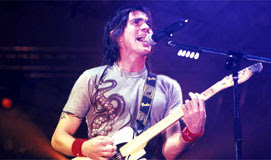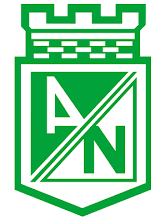
Sergio Fajardo, Mayor of Medellin, Colombia
Five years ago the hillside slum of Comuna 13 was the most brutal urban battleground in Latin America, a bloody microcosm of Colombia's [narco]-fueled civil war. Left-wing guerrillas, right-wing paramilitaries and well-armed [narco] gangs, often indistinguishable despite their ostensibly conflicting aims, had been fighting over the territory for years. Government, for most purposes, did not exist. In 2002, the casualty count for Comuna 13—in chaotic street fights, targeted assassinations and neighborhood-wide "cleansings"—numbered in the hundreds.
Today Comuna 13 feels like a completely different neighborhood. Its streets are relatively safe. School construction and public-transportation projects are now underway. But it is only the most dramatic example of the remarkable transformation of Medell?n, a city that struggled for decades to shed a notoriety, well earned in the days of Pablo Escobar and the Medellín cartel, as "the most dangerous in the world." In 1991, the annual murder rate was 381 per 100,000 people—more than 500 homicides a month. In 2002, it was 184 per 100,000. Last year, it fell below 30, making Washington, D.C., look bad in comparison.
Medellín is Colombia's second largest city and traditional business center, and as security improved, the economy also flourished. Since 2003, per capita income has increased by 25 percent, unemployment has fallen from 17 percent to 12 percent, and business investment and new construction have surged. At the same time, the percentage of the city's schools considered low-performing by national standards fell from 50 to 14. Complaints about congestion and pollution are typically met with the observation that residents have gone from discussing the daily body count to grumbling about their commute.
Medellín's transformation took off in 2002, when Alvaro Uribe took over as Colombia's president, promising a "firm hand," get-tough approach to security. He began a process of demobilization of right-wing paramilitary organizations, and confronted the Revolutionary Armed Forces of Colombia (FARC) and other guerrilla groups. In Medellín, soldiers and police stormed Comuna 13 in helicopters and armored vehicles, fighting and winning a series of pitched battles against various armed factions. But while this reduced the guerrilla presence, there was still an enormous amount work to be done, and a year later Sergio Fajardo, a shaggy-haired mathematician with a University of Wisconsin Ph.D., was elected mayor of Medell?n with a platform that suggested military victory was merely the first step to turning the city around. "Every reduction in violence," he says, "we had to follow immediately—and 'immediately' is a key word—with social interventions."
So when he took office, Fajardo did not just install new police outposts in Comuna 13. He built deluxe new schools, flooded the neighborhood with social workers and microcredit specialists, and commissioned a prominent architect to design a gleaming library and community center. He started construction on a mass-transit system of gondola cars that reach into Medellín's most dire slums—giving the poor access to the economic and civic life of the city's more prosperous center. Fajardo also increased the city's education budget by 65 percent and poured millions more into new schools and five "library parks," like the one in Comuna 13, designed by high-end architects and located in poor neighborhoods. "The mayor understood that you don't get peace from soldiers and police alone," says Carlos Jiménez, a Comuna 13 development worker.
Some critics say that Fajardo's approach is mere symbolism, showy grandstanding that does little to help the city's poorest. But Fajardo counters that these symbols are among his most potent weapons. "When the poorest kid in Medell?n arrives in the best classroom in the city, there is a powerful message of social inclusion," he says. This iconoclastic approach to urban transformation mirrors his willfully iconoclastic persona. Fajardo carries a backpack, rides a bike around town and shows up to work every morning in jeans. And while he uses the majority of public revenue on the poor, he does so without scaring businesses with the kind of radical populist rhetoric that so often emerges from the mouths of Latin American political leaders. "By showing that he is capable, he has brought credibility to the public sector," says Olga María Ospina, an economist with Medellín's business association. Result: his approval rating has remained around 80 percent, fueling speculation that he will one day succeed Uribe, who was mayor of Medell?n in the 1980s, as Colombia's president in 2010. (NEWSEEK)


























